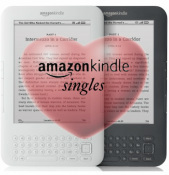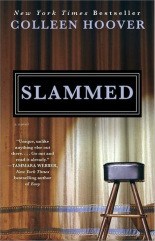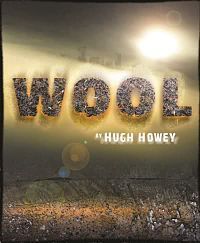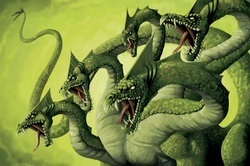Erica Verrillo's Blog, page 105
April 28, 2013
Amazon’s Kindle Singles a Win for Readers, Authors
 Reprinted with permission from the Authors Guild Blog, April 23, 2013
Reprinted with permission from the Authors Guild Blog, April 23, 2013We’ve been frequent critics of Amazon’s tactics in conquering established book markets, but credit is due to the company for doing what many would have considered impossible: creating a genuine market for novellas and novella-length nonfiction. In the New York Times this morning, Leslie Kaufman profiles Kindle Singles editor David Blum and cites Amazon’s statistic that about 28 percent of the 345 Singles published since January 2011 have sold more than 10,000 copies. Kindle Singles are a curated list of short e-books (5,000 to 30,000 words in length) available through Amazon’s Kindle Store.
Though publishing arrangements vary — some Kindle Singles are published by traditional publishers, others are self-published or put out by an emerging group of new publishers, such as Byliner — authors may earn as much as 70% of the proceeds from sales. Since bestselling Kindle Singles sell for an average price of $1.50 or so, a self-published author selling 10,000 or more Singles would likely earn revenues of $10,000 or more.
The current bestseller list of Kindle Singles includes many familiar names writing in genres that do particularly well in e-book form — including crime fiction and thrillers. What’s especially welcome to authors and freelance journalists is the healthy number of nonfiction titles on the list. These include works of history (#4, Mayflower: The Voyage from Hell, by Kevin Jackson; #16, Always Right, by Niall Ferguson), memoirs (#15, Dresden: A Survivor’s Story, by Victor Gregg), essays, and long-form journalism (#3, Trial By Fury: Internet Savagery and the Amanda Knox Case, by Douglas Preston; #13, Guns, by Stephen King, who’s donating proceeds to the Brady Campaign to Prevent Gun Violence). Writing on science also makes a credible showing on the Kindle Singles bestseller list (#43, Higgs Discovery, The Power of Empty Space, by Harvard physics professor Lisa Randall), as do works Amazon categorizes as reporting (#29, Here’s the Deal, by David Leonhardt).
It’s early days for Kindle Singles, too early to judge the eventual breadth and depth of this market. According to Amazon’s own numbers, just 100 Singles have sold more than 10,000 copies so far. But the trend, by all accounts, looks promising: Amazon is curating a new, significant short e-book market for authors and readers.
Published on April 28, 2013 07:19
April 24, 2013
Top 5 Sites for Science Fiction Writers
 Alien landscape by xymonau: RGB Originally published on Blogging Authors as "Top 5 Online Resources for Science Fiction Writers"
Alien landscape by xymonau: RGB Originally published on Blogging Authors as "Top 5 Online Resources for Science Fiction Writers"Of all the fiction genres, sci-fi – aka speculative fiction - stands as the one least likely to inspire a casual encounter. Sci-fi buffs are die-hards. That’s because sci-fi authors are required not just to do world-building, but to do universe-building. That’s real escapism.
Traditionally, a background in science has been virtually mandatory for sci-fi writers, and there are still many sci-fi magazines that require a strong scientific element in their published stories. But, as the concept of “science” has marched on to include not just the “hard sciences” (notably, physics and biology) but the social sciences (anthropology, sociology, history, and, to a certain extent, linguistics), sci-fi has matched pace. At this point, the subgenres are almost too numerous to name: cyberpunk, steampunk, apocalyptic, dystopian, space opera, spy-fi, and, of course, anything written by a woman. (For decades, sci-fi has been an all-male club.) Naturally, such a variety allows for considerable leeway, not just in what may be considered sci-fi, but how to write it. There is perhaps no other genre that has encompassed such a broad range of writing styles and voice.
How lucrative is the sci-fi market? It’s hard to say. Compared to romance novels, which generate a huge amount of revenue, sci-fi is a country cousin. But, what the sci-fi market lacks in big bucks, it makes up in sheer rebellion. Recently, Hugh Howey sold the print rights to his underground sci-fi hit, Wool, to Simon & Schuster for a “mid-six-figure” advance. Howey turned down “multiple” seven-figure advances because he’d already raked in over a million dollars of royalties from his self-published eBook. And Howey isn’t the only word-of-mouth wonder in the sci-fi world. This is a genre that thrives in the dark, subterranean alleys of the net, exploring strange new worlds, seeking out new life and new civilizations, and boldly going where no man has gone before.
These sites will help you on your mission.
1) Gunn Center for the Study of Science Fiction
There aren’t many institutions of higher learning that offer programs in science fiction. The Gunn Center for the Study of Science Fiction at the University of Kansas is, to our great delight, one of them. Their vision is stated clearly and unequivocally on their home page: “We are working to save the world through science fiction! To help achieve this, we have built a comprehensive program to serve SF students, educators, scholars, and fans, and through this extend the influence of this literature of change and the human species onto the world at large.”
You may think it doesn’t get much better than saving the world, but it does. Their resources list is the most comprehensive I have ever seen. Here you will find websites for writers, teaching and scholarly resources, awards, magazines, review sites, anthologies, fandom, blogs, artists, conferences, author websites, and more. When you are done browsing this site, I guarantee you will feel as if you are not in Kansas anymore.
2) SFsite
If you are going for sheer quantity this is a site that has reams of it: book reviews, opinion pieces, author interviews, fiction excerpts, author and publisher reading lists, a comprehensive list of links to author and fan tribute sites, sci-fi conventions, sci-fi TV and movies, magazines and e-zines, writer resources, publishers and small press sites, and many other sci-fi resources. For researching your competition, nothing beats this site.
3) Links to Science Fiction Websites
This page features a very long list of sci-fi sites (over 300). It is not as well organized, or as broad in scope, as the Gunn Center’s page, but there is a greater focus on contemporary sci-fi magazines, fan pages, and review sites, which makes this list quite useful to those trying to get stories published.
4) Top 50 Sci-Fi & Fantasy Novels Blogs
I always include this blog list in my “Top 5” posts no matter what the genre, because this is simply the best blog list out there. There isn’t a blog on this list you shouldn’t read. That being said, start at the top and work your way down. (You will notice that SFsite is at the top. There’s a reason for that.) The advantages of reading good blogs about your genre (and others) are almost too numerous to list - great writing tips, the latest news, reviews, entertaining stories, all the industry scuttlebutt - but essentially all these benefits boil down to one thing: you will not know what is going on in your field unless you read these blogs. Being up to date is something all agents and publishers expect of writers.
5) Science Fiction and Fantasy Writers of America
SFWA is the professional organization for authors of science fiction and fantasy. Past and present members include Isaac Asimov, Anne McCaffrey, Ray Bradbury, and Andre Norton. It goes without saying that if you join SFWA, you will be in good company.
In their own words: “SFWA informs, supports, promotes, defends and advocates for its members. We host the prestigious Nebula Awards, assist members in legal disputes with publishers, and administer benevolent funds for authors facing medical or legal expenses. Novice authors benefit from our Information Center and the well-known Writer Beware site.
SFWA Membership is open to authors, artists, editors, reviewers, and anyone else with a professional involvement with sci-fi or fantasy. Affiliate membership is $70 a year. Professional membership is $90.
Published on April 24, 2013 07:13
April 19, 2013
Self-Published Book Skyrockets Author to Success
 An April 16 Washington Post article captures the key to self-publishing success. If Colleen could do it, so can you.
An April 16 Washington Post article captures the key to self-publishing success. If Colleen could do it, so can you.SULPHUR SPRINGS, Texas — After a feverish month of inspiration, Colleen Hoover had finally fulfilled her dream of writing a book.
With family and friends asking to read the emotional tale of first love, the married mother of three young boys living in rural East Texas and working 11-hour days as a social worker decided to digitally self-publish on Amazon, where they could download it for free for a week.
“I had no intentions of ever getting the book published. I was just writing it for fun,” said Hoover, who uploaded “Slammed” a year ago in January.
Soon after self-publishing, people she didn’t know were downloading the book — even after it was only available for a fee. Readers began posting reviews and buzz built on blogs. Missing her characters, she self-published the sequel, “Point of Retreat,” a month later. By June, both books hit Amazon’s Kindle top 100 best-seller list. By July, both were on The New York Times best-seller list for e-books. Soon after, they were picked up by Atria Books, a Simon & Schuster imprint. By fall, she had sold the movie rights.
Read the rest of the article HERE.
Published on April 19, 2013 05:35
April 15, 2013
Self-Publisher Hugh Howey Refuses to Give Up Digital Rights and Signs a Six-Figure Deal With Simon & Schuster
 This fabulous article appeared in the Wall Street Journal as "Sci-Fi's Underground Hit." Make sure you read the whole article, to the very last line. It will inspire you.
This fabulous article appeared in the Wall Street Journal as "Sci-Fi's Underground Hit." Make sure you read the whole article, to the very last line. It will inspire you.Wall Street Journal, March 7, 2013
"Hugh Howey's postapocalyptic thriller "Wool" has sold more than half a million copies and generated more than 5,260 Amazon reviews. Mr. Howey has raked in more than a million dollars in royalties and sold the film rights to "Alien" producer Ridley Scott.
And Simon & Schuster hasn't even released the book yet.
In a highly unusual deal, Simon & Schuster acquired print publication rights to "Wool" while allowing Mr. Howey to keep the e-book rights himself. Mr. Howey self-published "Wool" as a serial novel in 2011, and took a rare stand by refusing to sell the digital rights. Last year, he turned down multiple seven-figure offers from publishers before reaching a mid-six-figure, print-only deal with Simon & Schuster.
"I had made seven figures on my own, so it was easy to walk away," says Mr. Howey, 37, a college dropout who worked as a yacht captain, a roofer and a bookseller before he started self-publishing. "I thought, 'How are you guys going to sell six times what I'm selling now?' "
It's a sign of how far the balance of power has shifted toward authors in the new digital publishing landscape. Self-published titles made up 25% of the top-selling books on Amazon last year. Four independent authors have sold more than a million Kindle copies of their books, and 23 have sold more than 250,000, according to Amazon.
Publishing houses that once ignored independent authors are now furiously courting them. In the past year, more than 60 independent authors have landed contracts with traditional publishers. Several won seven-figure advances. A handful have negotiated deals that allow them to continue selling e-books on their own, including romance writers Bella Andre and Colleen Hoover, who have each sold more than a million copies of their books."
Read the rest of the article HERE.
Published on April 15, 2013 11:16
April 12, 2013
What is Success? The Best-Seller's Numbers Game…
 Neal Pollack It’s not often you get to find out exactly how many books you have to sell before you can call yourself a “best-selling author.” Take a guess. Tens of thousands? Hundreds of thousands? Millions?
Neal Pollack It’s not often you get to find out exactly how many books you have to sell before you can call yourself a “best-selling author.” Take a guess. Tens of thousands? Hundreds of thousands? Millions?How about 10,000.
In a revealing interview on the A.V. club, best-selling author Neal Pollack not only gives us the inside skinny on his own numbers, but the inside skinny on what it means to be a “success.” Big publisher, six-figure advance, media hype? It turns out it’s all relative.
This is what Pollack had to say about those mysterious numbers:
Neal Pollack Anthology Of American Literature: ”despite all the attention it was getting, sold maybe 10,000 copies.”
Never Mind The Pollacks: “I’m almost embarrassed to say it, but I got a six-figure advance for Never Mind The Pollacks. Low, low, low six figures, but it was there … It is for a book that has sold, to this day, maybe 4,000 copies.”
Alternadad “… got more publicity than two-dozen books combined. I was on Nightline, and they did a piece on my family life. That book was everywhere and did a ton of press. But, again, it sold only 10,000 copies.”
JewBall (Pollack’s self-published book): “500 copies Kindle and paperback. Which is pretty normal for a self-published book … [Amazon's Thomas & Mercer imprint] republished it and quickly, very quickly, published it online and, a few months later, as a paperback. It sold 10,000-plus copies since they did that. And it’s never appeared, as far as I know, in a bookstore.”
Downward-Facing Death: “I wrote a yoga novel about that, again sold 10,000 copies. Ten thousand copies appears to be my threshold.”
If 10,000 copies is a measurement of success, then I can pat myself on the back. But, in spite of what you may hear, numbers aren't everything. Like Pollack, I’d like to see my book on a shelf somewhere, someday ... before I die.
Incidentally, I would also like to be proud of what was between the covers. And, if I were Neal Pollack, I would be.
In Allen Toussaint's immortal words:
"How does one decide
That the methods he's using,
They just don't jive
To truly believe and keep trying
Over and over again
Living in hopes,
That someday you'll be in with the winners
When should one change his mind
And jump the fence
For the dollar sign
It’s a sad thing, it's a bad thing
But so necessary
That this cold world forces
Your values to become monetary.
(It ain't necessary)"
Published on April 12, 2013 14:34
April 8, 2013
The Slow Death of the American Author
 It only hurts when I write... Yesterday, The New York Times published an op-ed piece by Authors Guild president, Scott Turow. If you've been wondering how Amazon's proposal to sell used ebooks will affect the slew of self- published authors, it isn't a pretty picture.
It only hurts when I write... Yesterday, The New York Times published an op-ed piece by Authors Guild president, Scott Turow. If you've been wondering how Amazon's proposal to sell used ebooks will affect the slew of self- published authors, it isn't a pretty picture."The Slow Death of the American Author"
By SCOTT TUROW
Published: April 7, 2013, NYT Opinion
"Last month, the Supreme Court decided to allow the importation and resale of foreign editions of American works, which are often cheaper than domestic editions. Until now, courts have forbidden such activity as a violation of copyright. Not only does this ruling open the gates to a surge in cheap imports, but since they will be sold in a secondary market, authors won’t get royalties.
This may sound like a minor problem; authors already contend with an enormous domestic market for secondhand books. But it is the latest example of how the global electronic marketplace is rapidly depleting authors’ income streams. It seems almost every player — publishers, search engines, libraries, pirates and even some scholars — is vying for position at authors’ expense."
Read the rest HERE.
Published on April 08, 2013 12:45
April 3, 2013
Top 5 Sites For Mystery/Thriller Writers
 First published on Blogging Authors as "Top Five Sites For Mystery/Thriller Writers."
First published on Blogging Authors as "Top Five Sites For Mystery/Thriller Writers."One of the chief advantages of writing mysteries is that you can actually make a living at it. Usually, mysteries are published in series. Once you have established an engaging main character and a perfect setting (according to Bowker, Americans like their mysteries set in “the misty bogs of Scotland and London’s Trafalgar Square” – but New York or Rome will do in a pinch) you are in business forever. Because human beings are hunters at heart, there is an insatiable demand for whodunnits. Roughly 48% of those who purchased novels last year bought mysteries.
Whether you are just starting your career as a mystery writer, or have a book or two under your belt, these should be the top sites to put on your “favorites” list.
1) The Mystery Writers Forum
The Mystery Writers Forum is a little peculiar looking, but it is the most useful site I've found for researching a mystery or crime novel. Some of the goodies you will find on this site are: forensics (everything from fingerprints to poison to forensics to photography), handwriting analysis, law links to law libraries, journals and internet resources, organizations, police procedure, DNA analysis, print publishers, ebook publishers, short story publishers, writing resources, and a long list of review sites. You can even consult a cop (for a fee) if you want firsthand information from someone in the trenches.
Special feature: The “Find a Death” link will take you to a site listing the deaths of celebrities – always useful fodder for a crime novel. Sadly, the link to the Mafia home page is broken.
2) Stop You're Killing Me
This site lists over 4,100 authors, with chronological lists of their books (over 46,000 titles), both series (4,700+) and non-series, which you can search alphabetically or through specialized indexes: diversity, historical, genre, job, and location. The site also features a comprehensive list of mystery/thriller awards with archives going back to 1988. New hardcover, paperback, and audio book releases are listed by the month, which makes this is a great resource for researching your competition. Stop You’re Killing Me also hosts giveaways. This is a great place to have your book reviewed!
3) Sisters in Crime
What a fabulous organization! Sisters in Crime offers an enormous list of mystery websites. The resource section on the website includes a helpful book publishing glossary. Membership dues are a mere $40 annually for an author pursuing a career in mystery writing, a bookseller, a publisher, a librarian, an editor or anyone who has a business interest in promoting the purposes of Sisters in Crime, Inc. Membership includes:
inSinC, a quarterly 16-page newsletter
Sisters in Crime listserv, including special guests on "Mentor Mondays"
Regional chapters, including The Guppies, a support and critique group for unpublished writers
Website link to titles by Sisters in Crime authors via WorldCat, a global catalog of library collections
An institutional presence at national and regional book events, mystery conferences and festivals with opportunities for individual author participation and/or distribution of promotional materials
An ongoing mystery review project that monitors media coverage of female and male authors
Our blog written by board members and other distinguished SinC members
Our monthly "SinC Links"—a digest of "news you can use" about the mystery business
New Sisters in Crime interactive map to find SinC authors and their most recent titles
Discounts for Members in 2013 - Gotham Writing Workshops and Writers' Police Academy
Reports from SinC's annual publishers summit
Networking, mentoring, and fun
4) Blog Rank Top 50 Mystery Novels Blogs
If you want to locate the top 50 blogs for just about any genre, go straight to Blogrank. This service ranks blogs according to the number of unique visitors, RSS feeds, Alexa ranking, and monthly visitors, all of which is useful information if you are looking for a high-profile site to submit a guest post. Aside from offering venues to increase your visibility, these blogs offer valuable insights into the publishing world, the latest industry trends, and, of course, great tips from top mystery writers.
5) Mystery Writers of America
Mystery Writers of America is the leading association for professional crime writers in the United States. Founded in 1945, MWA presents the Edgar® Awards, widely acknowledged to be the most prestigious awards in the genre.
Membership is open to professional writers in the crime/mystery/suspense field whose work has been published or produced in the U.S., and who reside in the U.S. (special memberships are offered to those living abroad); agents, attorneys, booksellers, editors, reviewers, librarians, journalists, and publicists. Dues for all categories of membership are $95.00 per year.
The MWA website features an extensive list of author newsletters, author blogs, and an extremely useful list of over 150 approved publishers (including periodicals and ezines).
Published on April 03, 2013 09:15
April 1, 2013
Random House Opens Its Doors to Self-Publishers, Perhaps
 Article first published as Random House Opens Its Doors to Self-Published Authors, Perhaps on Blogcritics.
Article first published as Random House Opens Its Doors to Self-Published Authors, Perhaps on Blogcritics.Vanity of vanities; all is vanity
With a few famous exceptions, self-publishing, aka “vanity” publishing, is the kiss of death for writers. For aspiring writers hoping to take a seat in the hallowed halls of authordom, launching a novel with a self-published imprimatur was almost like having a scarlet A stitched onto your bodice – as far as the major houses were concerned.
Then, along came Fifty Shades of Grey, originally published as an ebook by an obscure “virtual” publisher in Australia. Within a year, Amazon announced that it had sold more copies of Fifty Shades than Harry Potter. The publishing world was shaken. An ebook, fan fiction no less, had outsold the top-grossing series of all time. Random House, still smarting from having turned down J.K. Rowling, leapt to its metaphorical feet and did the unthinkable. It picked up a self-published ebook. This was a first for the world’s largest publisher, an opening of doors that had, up until now, been almost impossible to enter. It was hailed as a turnaround for the industry. But was it?
Random House’s sudden epiphany - “there’s gold in them thar hills!” - was followed by yet another Eureka moment. Anybody can sell electronic books! Random House immediately threw its hat into the ring, and started its own digital imprints: Alibi (mystery), Loveswept (romance), Flirt (for “New Adults,” whoever they are), and Hydra, a sci-fi imprint aptly named after a multi-headed reptile which was so poisonous even its tracks were deadly. Notwithstanding the ominous association with Greek monsters, Random House held out the biggest carrot of all time: Authors could submit their works, even those “previously published,” directly to Random House, thus bypassing the almost insurmountable hurdle of snaring an agent.
Naturally, there was a catch – or two.
The first catch was that authors would have to bear the costs of publication. This is also true for self-published authors, though now those costs would be exclusively determined by Random House. The second was that instead of receiving the traditional advance against publication, there would be “profit sharing.” The publisher and author would split revenues 50/50. As it turns out, “profit sharing” is simply a rebranding of the Subsidiary Rights clause of the standard Random House contract, in which proceeds of electronic books, audiobooks, translations, etc. are divided equally between publisher and author.
In short, by removing up-front payments to the author, while simultaneously eliminating all of its own expenses, Random House was imitating a vanity press. But, unlike vanity houses, they would take half of the profits. Random House was hoping nobody could add.
The Science Fiction and Fantasy Writers Association (SFWA) not only added, they subtracted their members. In a scathing letter sent to its members on March 6, the SFWA stated that it had “determined that works published by Random House’s electronic imprint Hydra cannot be used as credentials for SFWA membership, and that Hydra is not an approved market.”
The reason? “Hydra fails to pay authors an advance against royalties, as SFWA requires, and has contract terms that are onerous and unconscionable. Hydra contracts also require authors to pay – through deductions from royalties due the authors – for the normal costs of doing business that should be borne by the publisher.”
Needless to say, there are serious ramifications from being blacklisted by sci-fi’s largest and most influential writer’s association. Random House was compelled to make an immediate rebuttal.
“We read with interest your posts today about the new Random House digital imprints and our business model,” wrote Allison Dobson, V.P., Digital Publishing Director. “While we respect your position, you’ll not be surprised to learn that we strongly disagree with it, and wish you had contacted us before you published your posts.”
The opening of this letter precisely mimics the simulated regret that politically correct parents employ when punishing their wayward children: We like you, but we don’t like what you did.
Sci-fi wrists duly slapped, Allison now proceeded to the spin, “with a profit-share model … the author and publisher share equally in the profits from each and every sale. In effect, we partner with the author for each book.” Allison describes this partnership as “an all-encompassing collaboration.”
(Translation: We are on your side. We’re really your friends.)
Addressing costs, Allison says, “These costs could be much higher--and certainly be more stressful and labor-intensive to undertake--for an author with a self-publishing model. Profits are generated once those costs are subtracted from the sales revenue. Hydra and the author split those profits equally from the very first sale.”
(Translation: You’re too young to handle this. Leave everything to us. We know what’s best for you.)
As a disciplinary device, this letter was nothing short of brilliant. It hit every aspiring author’s weak spots in a way that nobody could resist. But Random House has had plenty of practice at this game. These tactics are the stock-in-trade of publishing houses: shining promises, followed by intimidating jargon, followed by incomprehensible terms.
SFWA did not recant, and Random House was forced to comply with the usual standards of print publication. Authors submitting work to Random House’s electronic imprints are now offered a choice of the advance against royalties model, with a royalty of 25 percent of net receipts, and the publisher “will cover production, shipping, and marketing for all formats at 100 percent of cost.”
The day has been won by organized labor, but in reality nothing has changed. Authors still provide the raw materials (for a small percentage), and publishers provide the finished goods for the bulk of the profit. Whether it takes on a new guise, sports a new brand, or appears to adopt a new format, The thing that hath been, it is that which shall be; and that which is done is that which shall be done: and there is no new thing under the sun.
Get the details :
http://www.publishersweekly.com/pw/by-topic/digital/content-and-e-books/article/56244-rh-responds-to-sfwa-slamming-its-hydra-imprint.html
http://www.atrandom.com/eoriginals/index.php (New RH Imprints)
http://www.blogger.com/comment.g?blogID=17222280&postID=6545427618418573673&page=1&token=1364342448331 (Writer Beware blog)
http://www.digitalbookworld.com/2013/sci-fi-and-fantasy-writers-group-condemns-random-house-hydra-digital-imprint/
Published on April 01, 2013 07:40
March 29, 2013
Biggered again!
 Shortly after reading the news that Amazon had purchased Goodreads on Publishers Weekly this morning, I received this message from the Authors Guild. Need I say more?
Shortly after reading the news that Amazon had purchased Goodreads on Publishers Weekly this morning, I received this message from the Authors Guild. Need I say more?Turow on Amazon/Goodreads: This is how modern monopolies can be built
By Scott Turow
Author's Guild Blog Post 3/29/2013
Amazon’s garden walls are about to grow much higher. In a truly devastating act of vertical integration, Amazon is buying Goodreads, its only sizable competitor for reader reviews and a site known for the depth and breadth of its users’ book recommendations. Recommendations from like-minded readers appear to be the Holy Grail of online book marketing. By combining Goodreads’ recommendation database with Amazon’s own vast databases of readers’ purchase histories, Amazon’s control of online bookselling approaches the insurmountable.
“Amazon’s acquisition of Goodreads is a textbook example of how modern Internet monopolies can be built,” said Scott Turow, Authors Guild president. “The key is to eliminate or absorb competitors before they pose a serious threat. With its 16 million subscribers, Goodreads could easily have become a competing on-line bookseller, or played a role in directing buyers to a site other than Amazon. Instead, Amazon has scuttled that potential and also squelched what was fast becoming the go-to venue for on-line reviews, attracting far more attention than Amazon for those seeking independent assessment and discussion of books. As those in advertising have long known, the key to driving sales is controlling information.”
One example should make it clear how formidable this combination is. For “Animals Make Us Human” by Temple Grandin and Catherine Johnson, Amazon has 123 customer reviews, and B&N has about 40 (they report 150, but that figure includes ratings as well as reviews). Goodreads swamps these figures, with 469 reviews and 2,266 ratings for the book.
As an independent platform, Goodreads, with its 16 million members, posed a serious competitive threat to Amazon. No more.
Published on March 29, 2013 12:51
March 25, 2013
Precycling: A Great Way to Get the Most Mileage Out of Your Blogs
 If you are new to the blogging scene, you probably don’t have a lot of followers (yet). For aspiring authors, this is a calamity. There you are, pouring your heart and soul into your posts, and nobody is reading them! How will anybody know that you are a gifted writer if your blog is languishing, unhonored and unsung, in cyberspace?
If you are new to the blogging scene, you probably don’t have a lot of followers (yet). For aspiring authors, this is a calamity. There you are, pouring your heart and soul into your posts, and nobody is reading them! How will anybody know that you are a gifted writer if your blog is languishing, unhonored and unsung, in cyberspace?The standard advice to unsung bloggers is to guest post, preferably on a high-profile blog that gets a lot of daily traffic. While this is a good way to build visibility, it can often take months before your blog is posted. (The more popular the blog, the longer the wait.)
A more traditional approach to increasing your visibility is write for ezines (online magazines). Again, this is a time-consuming process. First you have to pitch your idea, then have it approved, and then wait for a slot. For those who need to build a platform now, all that waiting, often followed by the inevitable heartbreak of rejection, can be a strain. A third option is to precycle.
Let’s say you have written an informative, humorous, moving or any well-written piece that simply screams, "People need to read this!" In order to get these gems the immediate attention they deserve, you can post them on sites that get a lot of traffic, but don’t involve a long wait. It seems almost too good to be true.
The only catch is that all of these sites require that your work be 1) original (it is, it is!), and 2) that you post on their site first (it boosts their SEO to have first shot at original pieces). Because these sites are concerned about the quality of submissions, they will want to see examples of your writing before approving you. (This is easy if you’ve been devoting yourself to your writing.) After a short wait, you are good to go.
Where you precycle depends a lot on what you write. Some sites cater to people with a literary bent, others to the contemporary scene, and still others to more practical information and advice. If you do a Google search on “article submission websites” you will find lots of places to precycle.
In the meantime, here are some suggestions:
1) Blogcritics. "A sinister cabal of superior writers."
Everybody who’s anybody reads Blogcritics. (It’s got a global Alexa ranking of 23,796, which is quite good.) The audience tends to be young, so Blogcritics is far and away the best place to post reviews of anything contemporary (music, books, articles, TV shows, movies, culture, politics). But do not despair if you are an old codger. You can post other pieces as well. I’ve posted everything from medical articles to opinion pieces without a hitch. (Take a look at their “features” to get an idea of the range of topics.) The best thing about Blogcritics is that they syndicate their articles. That means your post could end up in an online newspaper. Perhaps in Seattle. Make sure to read their guidelines carefully.
2. Buzzle. "Intelligent life on the web."
For all you fiction and poetry writers, Buzzle is a gift from heaven. Like Blogcritics, Buzzle appeals to a young audience, but unlike other high-ranking article sites, they welcome fiction and poetry. (Poetry!) Their audience is predominantly female. Buzzle does not allow URL links in their posts.
3. ArticlesBase.
This is a high-quality free article site that prefers informative “evergreen” articles. An evergreen article is one that stands the test of time. You can read it a year from now, and it will still be relevant. The reason for their preference is that ArticlesBase, like many other free article services, is a resource for journals and ezines that need an article fast and don’t want to pay for it. Once you submit your article it could appear anywhere. You won’t get paid, but you will get exposure. No anchors or URLs are allowed.
4. BloggingAuthors. "A place where readers and writers meet."
If you have published something, you can write for BloggingAuthors. In their words, “BloggingAuthors.com is dedicated to helping authors of all genres, including mystery, business, legal thrillers, relationships, non-fiction, spirituality, religion, health, book promotion, and literary fiction.” Though they claim to get 1000 views a day, their Alexa ranking is abysmal. The reason you may want to post here is 1) they include a bio and a backlink to your website and blog, and 2) they tweet. Whenever they post an article it gets tweeted to 7,000 followers. BloggingAuthors is distributed through a weekly mailer.
More Resources:
50 Free Article Submissions Websites
List of top 50 Article Directories by Traffic and Pagerank
Free article tracker
Published on March 25, 2013 08:51



